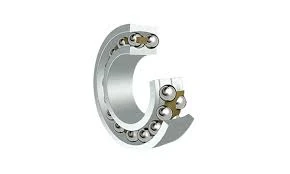
Nov . 24, 2024 16:16 Back to list
taper bore bearing
Understanding Taper Bore Bearings Design and Applications
Taper bore bearings are essential components in various mechanical systems, particularly in industries like automotive, aerospace, and manufacturing. These bearings are designed to accommodate axial loads while also allowing for radial loads, which makes them a popular choice for applications requiring robust performance and reliability.
What is a Taper Bore Bearing?
A taper bore bearing is a type of rolling-element bearing with an inner raceway that has a tapered (conical) shape. This design enables the bearing to fit snugly over a tapered shaft, allowing for precise alignment and reducing the risk of misalignment that can lead to bearing failure. The taper allows the bearing to be mounted easily and removed for maintenance, which is particularly advantageous in industrial settings where downtime can be costly.
Key Features of Taper Bore Bearings
1. Conical Inner Race The most distinguishing feature of taper bore bearings is their conical inner race, which allows them to fit onto tapered shafts. This design reduces the load on the outer race and increases the stability of the bearing under varying operational conditions.
2. Self-Aligning Property The tapered design allows for some degree of misalignment. This is particularly useful in applications where the shaft may experience slight bending or when the mounting surfaces are not perfectly aligned.
3. High Load Capacity Taper bore bearings can carry heavier loads compared to plain bearings due to their rolling element design. This makes them suitable for applications that experience significant radial and axial loads.
4. Easier Installation and Removal The taper allows for easy installation and disassembly of the bearing from the shaft. This feature is vital in industries where frequent maintenance is required.
Applications of Taper Bore Bearings
taper bore bearing

Taper bore bearings are used in a wide variety of applications, showcasing their versatility
- Automotive Industry In vehicles, they are commonly used in wheel hubs, transmissions, and differential assemblies. Their ability to handle both radial and axial loads makes them ideal for components that experience varying forces during operation.
- Industrial Machinery Taper bore bearings are widely used in conveyor systems, machine tools, and packaging machinery. Their robust design helps in improving the longevity and reliability of these machines.
- Aerospace Applications The aerospace industry demands high-performance bearings that can withstand extreme conditions. Taper bore bearings are utilized in landing gear and turbine engines due to their strength and reliability.
- Heavy Equipment Construction and mining equipment often rely on taper bore bearings to handle the significant stresses imposed by heavy loads and harsh environments.
Advantages of Taper Bore Bearings
One of the primary advantages of taper bore bearings is their ability to accommodate misalignments while maintaining load-bearing capabilities. This feature minimizes wear and extends the life of the bearing, ultimately reducing maintenance costs. Furthermore, the ease of installation and removal means that replacements can be done swiftly, minimizing downtime in industrial processes.
Additionally, taper bore bearings are constructed from various materials, including steel and ceramic, allowing them to meet specific operational requirements, including resistance to corrosion, high-temperature performance, and low-friction characteristics.
Conclusion
In conclusion, taper bore bearings are a vital component in many mechanical systems, known for their unique design and versatility. Their ability to handle loads effectively, accommodate misalignment, and allow for easy maintenance makes them a preferred choice in various industries. As technology continues to advance, the design and material options for taper bore bearings are expected to evolve, further enhancing their performance and applicability in complex mechanical systems. Understanding these bearings' functionality and advantages is crucial for engineers and technicians who aim to optimize the reliability and efficiency of their systems.
Latest news
-
Premium Deep Groove Ball Bearings | High Speed & Reliability
NewsAug.29,2025
-
Durable Scaffolding Clamps - Secure & Reliable Tube Connectors
NewsAug.28,2025
-
Common Failures in Thrust Ball Bearings and Solutions
NewsAug.22,2025
-
How Tapered Roller Bearings Can Take Shock Loads
NewsAug.22,2025
-
Angular Bearings in High-Precision Spindles
NewsAug.22,2025
-
The Impact of Misalignment on Cylindrical Roller Bearing Performance
NewsAug.22,2025
